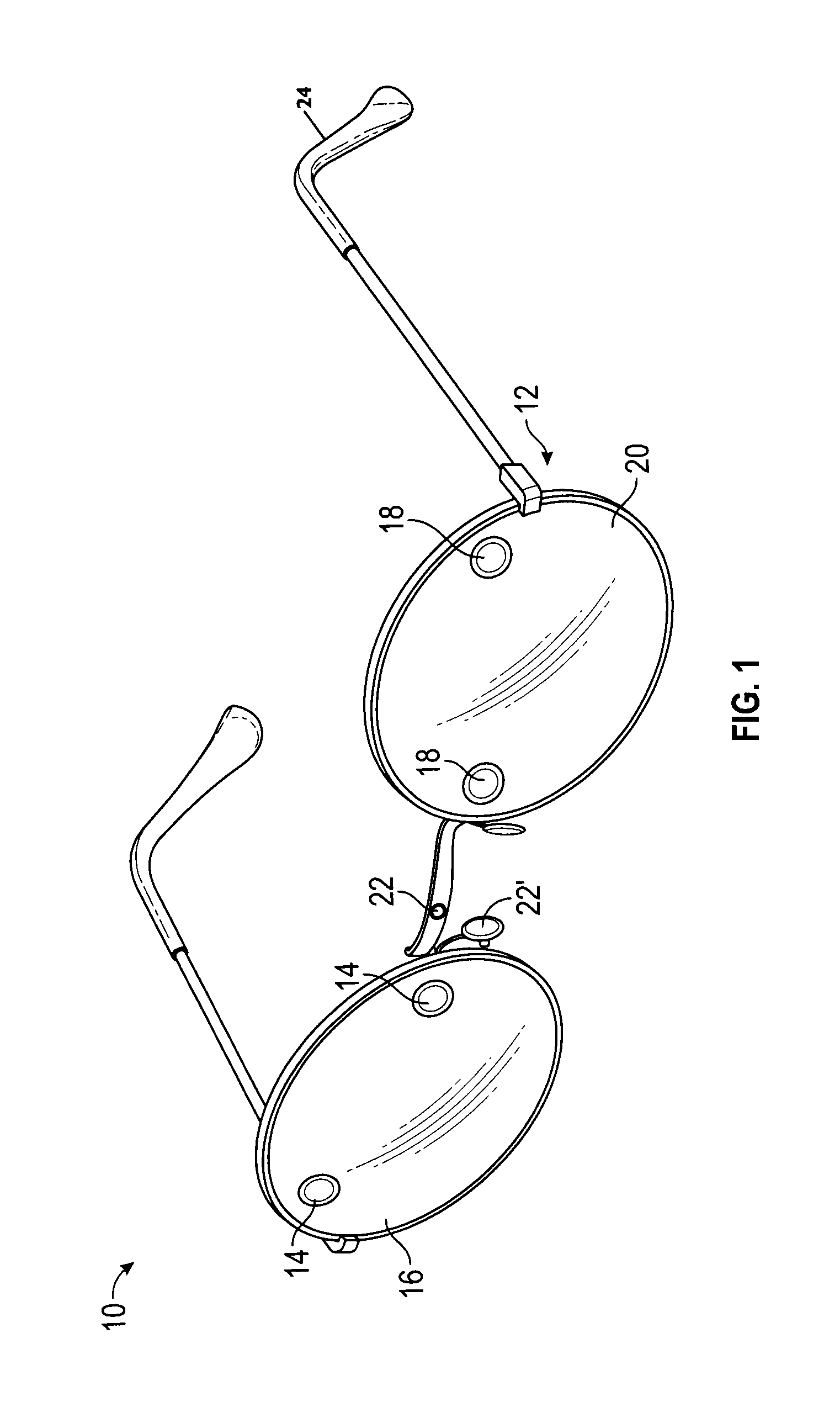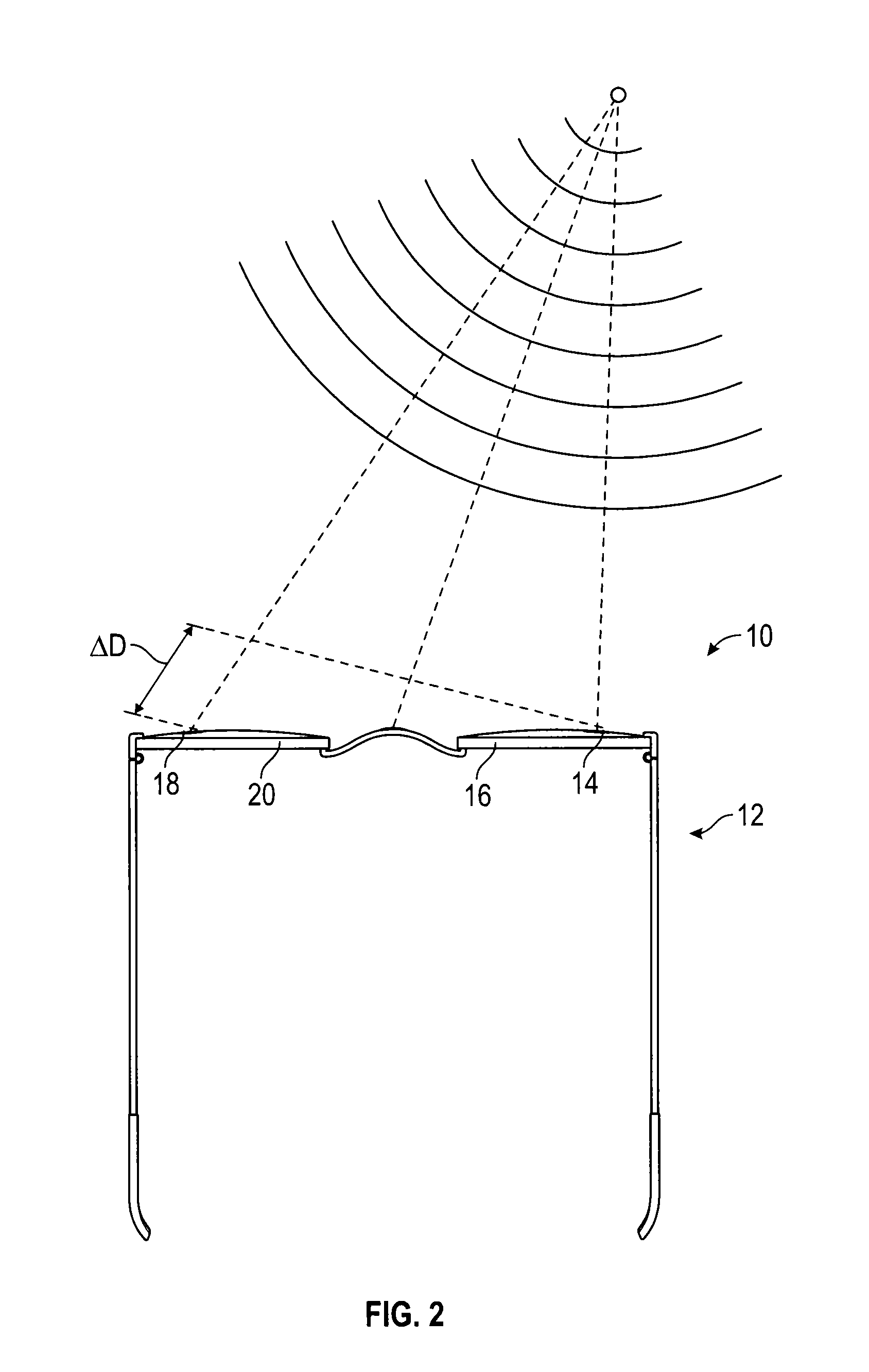Stereophonic focused hearing
a technology of focused hearing and stereophonics, applied in the field of hearing aid systems, can solve the problems of small area of sound energy intercepted, large effort expended on the part of small microphones, and inability to detect large volumes, etc., and achieve the effect of improving hearing
- Summary
- Abstract
- Description
- Claims
- Application Information
AI Technical Summary
Benefits of technology
Problems solved by technology
Method used
Image
Examples
example 1
[0040]A signal processor is programmed to enhance the hearing experience of the user by using the following signal characteristics. The first characteristics of the acoustic sound signal is its velocity in air which is about 1100 ft. / s. Assuming a 0° reference to be directly in front of the wearer, the wearer's looking direction, and considering a signal whose origin is N degrees to the right of the wearer, the resulting detection of the assumed signal would happen at the two lenses spaced apart in time because the signal path to the right lens would be shorter than the left lens signal path. This difference, when presented to the human hearing system, gives the wearer the angular deviation from straight-ahead. In a signal processor the signal from N degrees to the right can be identified since it is the same in each lens only displaced in time of arrival, and the angular displacement from 0° of the signal source can be calculated.
[0041]The processor uses triangulation methods known...
example 2
[0042]A further triangulation method allows depth perception of sounds. The distance measurement is based on utilizing two sound transducers at each eyewear lens and using a time of arrival difference measurement to solve two resulting triangles, one for each side of the eyewear. The solution of two oblique triangles is possible because the length of one side of the triangle is known, i.e., the distance between the transducers. The difference in length of the two remaining sides is determined by measuring the slight difference in time of arrival of two identical syllables at the two transduces for each side. Using the above triangle definition, the processor will find the resulting triangle and determine the angle from forward of the origin of that syllable. The distance from the viewer will then calculated by the solution of a third triangle formed by the lines extending from the center of each lens, right and left, at their respective angles from forward. The solution of this thir...
PUM
 Login to View More
Login to View More Abstract
Description
Claims
Application Information
 Login to View More
Login to View More - R&D
- Intellectual Property
- Life Sciences
- Materials
- Tech Scout
- Unparalleled Data Quality
- Higher Quality Content
- 60% Fewer Hallucinations
Browse by: Latest US Patents, China's latest patents, Technical Efficacy Thesaurus, Application Domain, Technology Topic, Popular Technical Reports.
© 2025 PatSnap. All rights reserved.Legal|Privacy policy|Modern Slavery Act Transparency Statement|Sitemap|About US| Contact US: help@patsnap.com



